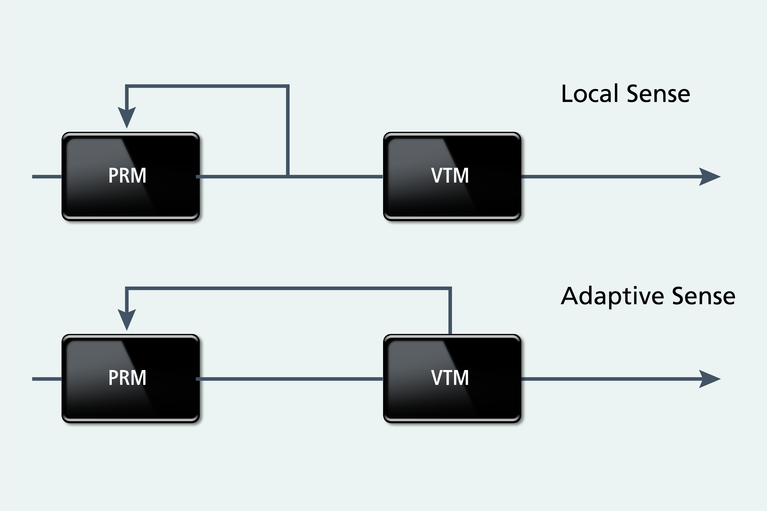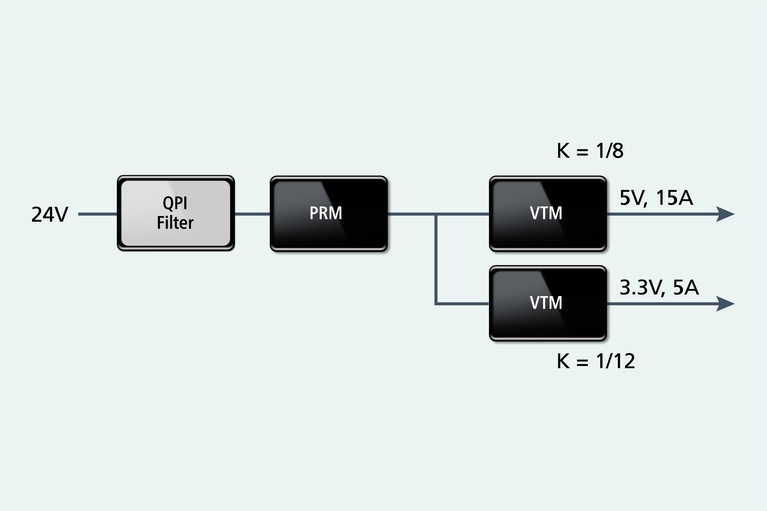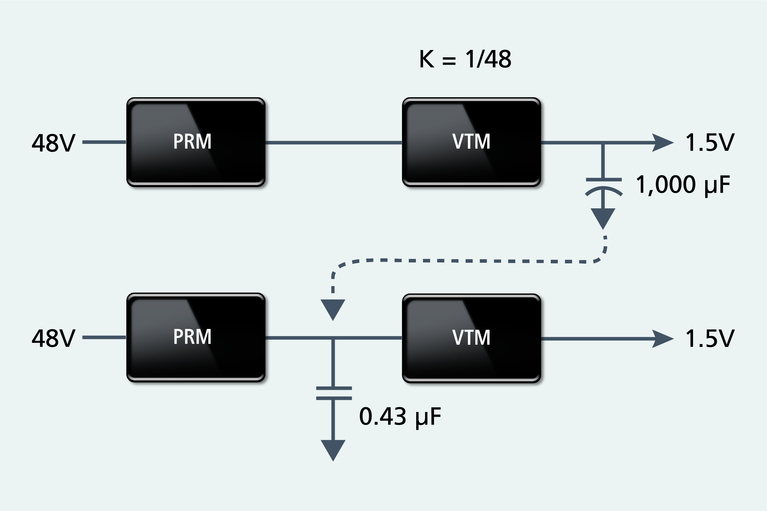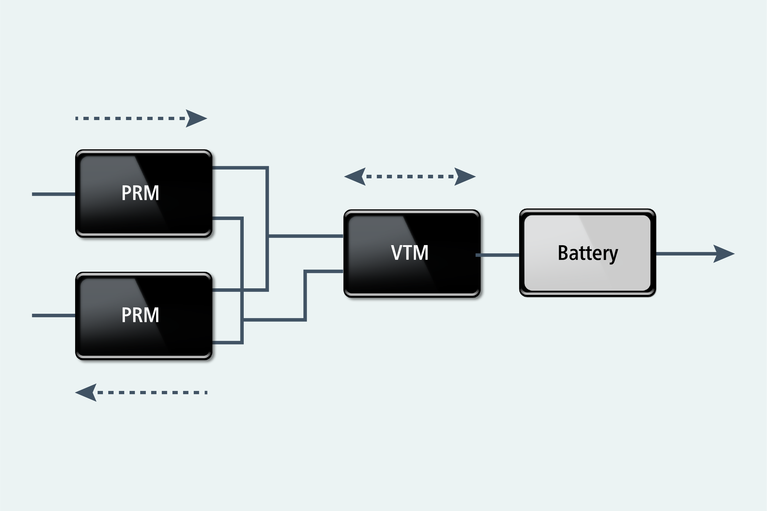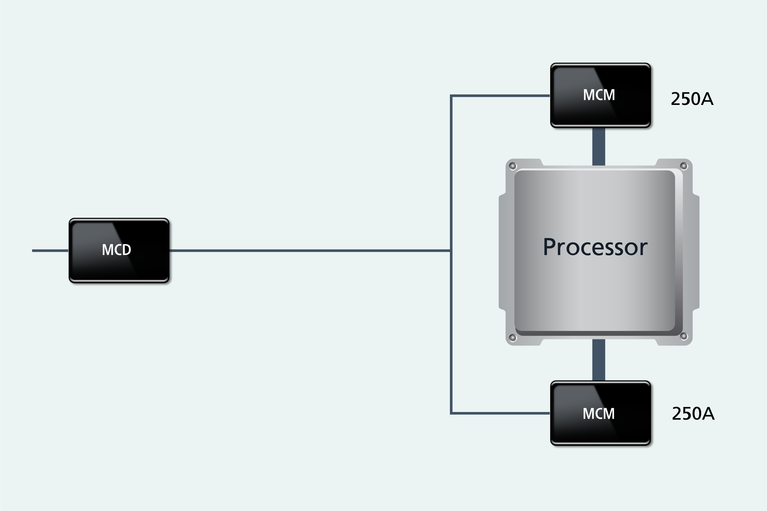
Build small, lighter power systems by eliminating bulk capacitance

Size of power converter prevents it from being placed close to load

High output current causes large line (I2R) losses

Large bulk-electrolytic caps crowds space near the load

Switcher close to load causes noise



Minimizes wasted energy

Low EMI

Adjusts for any load

Scales for power demands

High density

Component position flexibility

Fast transient response

Easy, modular design
The PRM uses the factorized bus current to regulate the voltage on the secondary of the VTM and provides 1% regulation at the PoL without voltage sense lines.
One regulator can drive multiple transformation stages (VTM) to provide different PoL voltages.
With its low output impedance, smaller ceramic capacitors (up to 1000x less capacitance) may be used at the VTM input in place of PoL bulk capacitors.
Select VTMs operate with source power applied to input or output terminals to support bi-directional applications.
Enables Power-on-Package technology and on motherboard for high current XPUs.
Build small, lighter power systems by eliminating bulk capacitance
Innovating power delivery networks
Every electronic piece of equipment or system has a power delivery network (PDN)
Disaggregating power in data centers
High-density power modules will play a key role in enabling high-voltage DC distribution to AI supercomputer data-center racks
Vicor presented the best practices for using modular power to achieve efficient, power-dense and scalable PDNs for edge computing
High density of modular power leads to space savings and cost efficiency for edge computing
